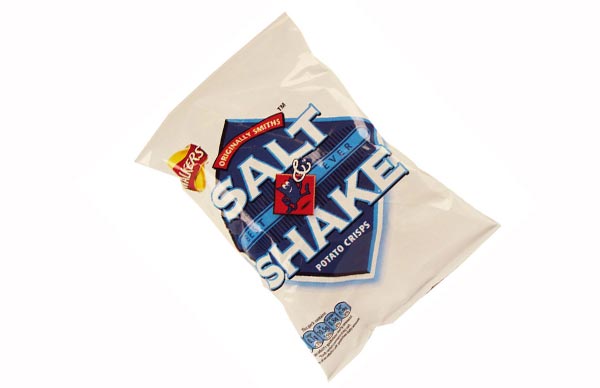You've been through your counter-espionage check list and scanned the room for hidden microphones and other kinds of surveillance devices. You've even gone as far as making sure you are in a room with soundproof glass and will hold your conversation so your lips aren't visible to anyone that could see you talking through the window. However you've missed one critical vulnerability, a bag of crisps (potato chips) on the desk beside you…

Salt & Shake & Vibrate & leak your private conversations
Sound waves produced when we talk move the air and these air movements are picked up by a listeners' ear-drums which receive the air vibrations. But other objects in a room also vibrate in sympathy with the sound waves. Something like a crisp packet makes an ideal observable surface to see these air vibrations it seems.
MIT News reports that "researchers at MIT, Microsoft, and Adobe have developed an algorithm that can reconstruct an audio signal by analyzing minute vibrations of objects depicted in video". Experiments using the algorithm show that the researchers were able to listen in to speech by filming the vibration of the surface of a bag of crisps in the room from a distance of 15ft, though a barrier of soundproof glass. The camera bnecomes a 'visual microphone'.
Abe Davis, a graduate student in electrical engineering and computer science at MIT and first author on the new paper explained "The motion of this vibration creates a very subtle visual signal that’s usually invisible to the naked eye. People didn’t realize that this information was there."
To be able to reconstruct audio from the video of the vibrating object the video FPS rate ideally needs to be higher than the frequency of the audio signal - otherwise there is a cut off which can make it hard to decode what is being said. The researchers found that a frame rate of between 2,000 and 6,000 FPS worked well. However even an "ordinary digital camera" with a 60fps video mode could also be useful for determining key info about the people speaking in a room.
If you're thinking James Bond would never be seen in the same room as a packet of crisps - so he would be safe - the scientists have also successfully snooped on audio via the leaves of a pot plant and the surface of a glass of water - so a martini would also be able to give away the secrets discussed in this closed soundproofed room too.
The researchers will present their findings and further details of their experiments at SIGGRAPH computer graphics conference.













